
 |  |  |  |  |  |  |
|---|---|---|---|---|---|---|
 |  |  | 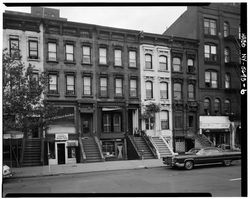 |  | 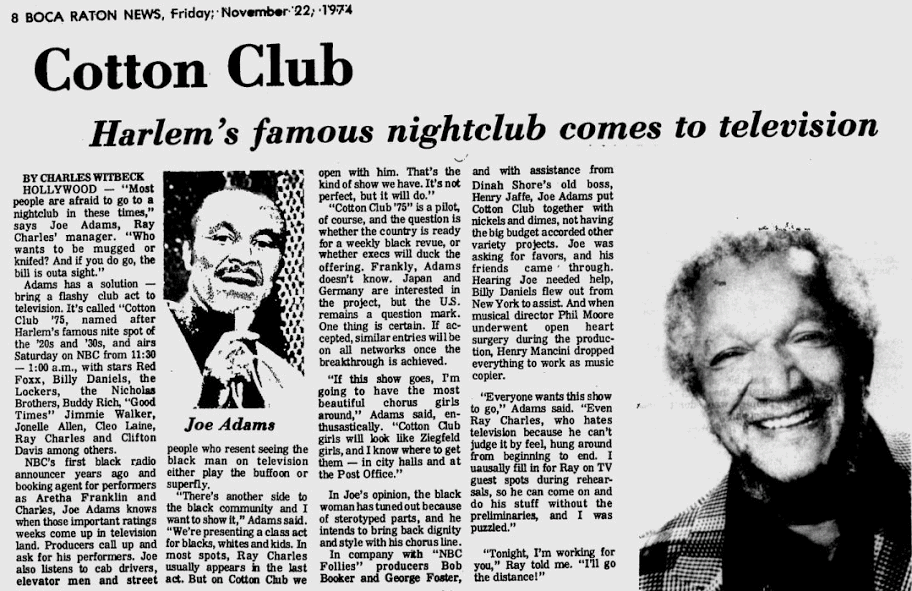 |  |
 |  | 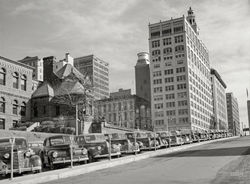 |  |  |  |  |
 |  |  |  |  |  |  |
 |  | 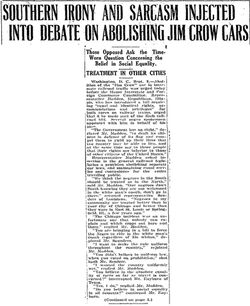 |  |  |  |  |
 |  | 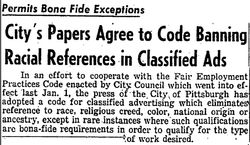 |  |  |  |  |
 |  |  |  |  |  |  |
 |  |  |  |  |  |  |
 |  | 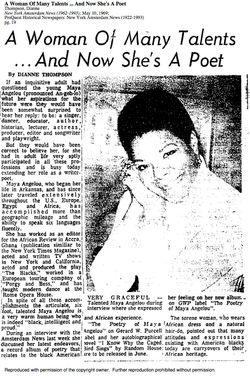 |  |  |  |  |
 | 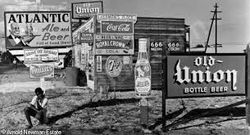 |  |  |  |  |  |
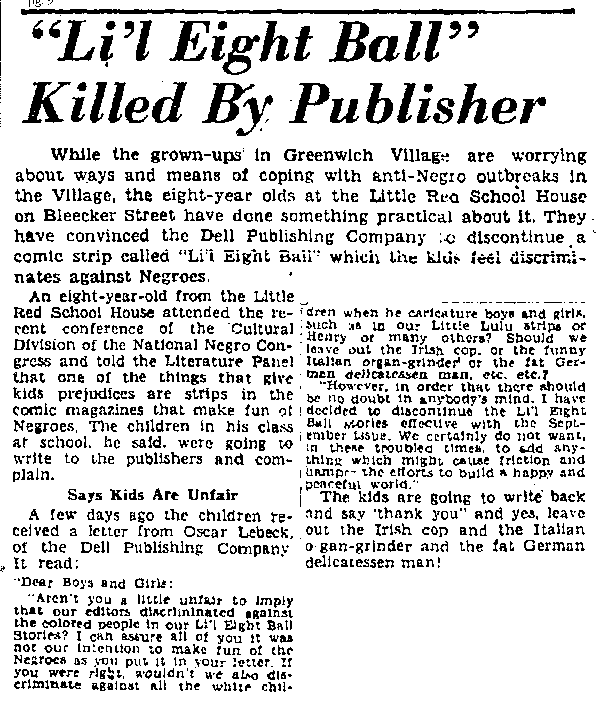 |  |  |  | 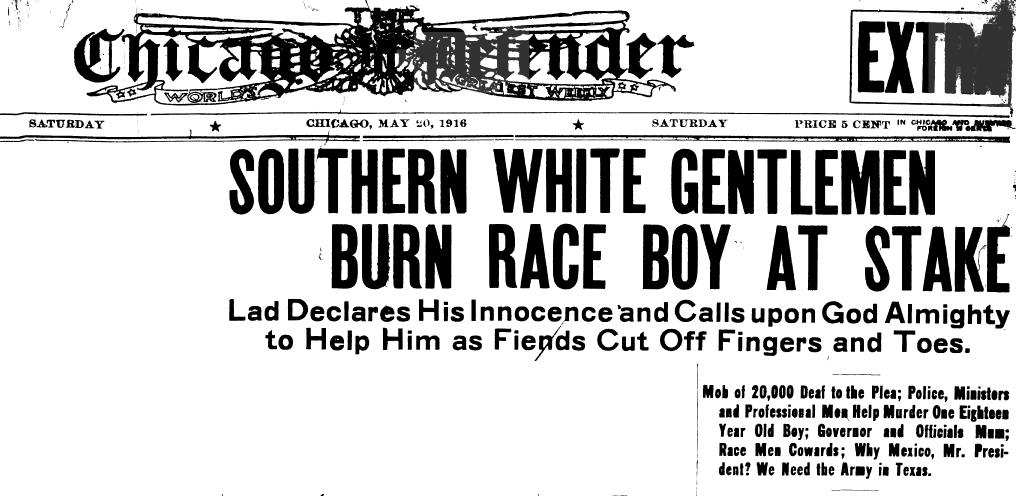 |  |  |
 |  |  |  |  |  |  |
 |  |  |  |  |  |  |
 |  |  |  |  |  |  |
 |  |  |  |  |  |  |
 |  |  |  |  |  |  |
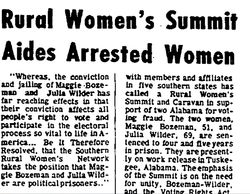 |  |  |  |  |  |  |
 |  |  |  |  |  |  |
 |  |  |  |  |  |  |
 |  |  |  |  |  |  |
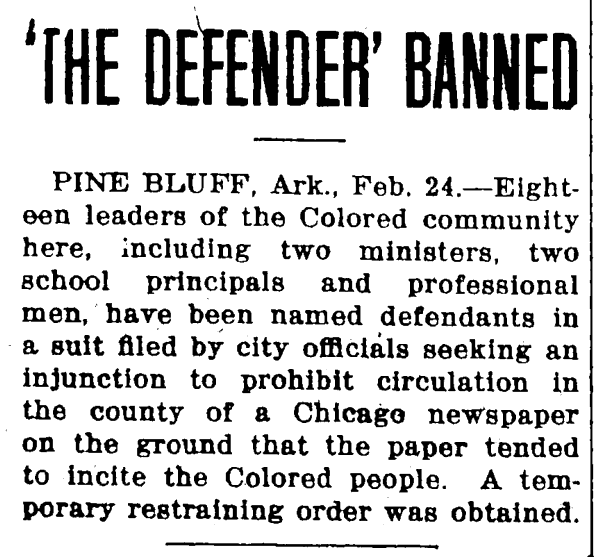 |  |
WWII, Housing, and Politics
Entry of the United States into World War II, after the bombing of Pearl Harbor in December 1941, led to the end of the Great Depression as the war effort jumpstarted industry. As the nation prepared for war in the summer of 1941, jobs in the war industries of the city, especially at the Brooklyn Navy Yard, were opened to black men and women—albeit in low-paying jobs—and they took advantage of opportunities in shipbuilding and other industrial trades. Still, the armed forces and the war industries continued to be segregated until New Yorker A. Philip Randolph—founder of the predominantly black union, the Brotherhood of Sleeping Car Porters—threatened a march on Washington. In June 1941, President Franklin D. Roosevelt issued Executive Order 8802 banning discrimination in the defense industries and government.
Black males experienced improved employment opportunities during and after the war as well. The G.I. Bill offered those who had fought in the armed services unprecedented opportunities to purchase housing and to pursue college and university degrees. The abolition of restrictive covenants and discrimination in housing, coupled with the G.I. Bill, opened housing opportunities for black New Yorkers in the outer boroughs. There was a downside, however, to this prosperity. Over the next two decades, the dispersal of the black middle and upper classes from Harlem, among other factors, would profoundly change the dynamics of the neighborhood.
Victories over discrimination in the military and on the domestic front during the war heightened African Americans’ expectations and renewed their commitment to dismantle America’s entire system of racial segregation once the war ended. The NAACP and its Legal Defense and Educational Fund took the lead after the war, prosecuting cases that challenged racial segregation in education, public accommodations, housing, and employment. Harlem Congressman Adam Clayton Powell, Jr., who entered the U.S. House of Representatives during the war, brought a new focus of attention on discriminatory practices in the nation’s capital as well as its Congress.
The 1940s saw the beginning of the Second Great Migration that lasted until the 1970s. The exodus of African Americans from the South to the North and West was much larger and quite different from the more famous movement that had preceded it. By 1970, about five million African Americans had migrated. They became a more urbanized population than whites: more than 80 percent lived in cities, as compared to 70 percent for the general population; and while 53 percent remained in the South, 47 percent made the North and West their home.
Between 1940 and 1950, 211,153 southerners settled in New York City. But there, as in other cities, segregation and discrimination created an explosive situation. The resentment over discrimination in jobs and housing, police brutality, and humiliations of all sorts culminated in major riots in 1943, from Detroit to New York. The Second Great Migration resulted in the “ghettoization” of the African-American population, with long-ranging social, political, and cultural consequences.
The Second World War
The war effort did not benefit black New Yorkers as much as they had expected. They were denied access to many factory positions. When industrial jobs were available, they were often the least skilled, least desirable, and lowest paying, offering the least opportunity for advancement. African Americans were disproportionately represented in janitorial and service industry jobs that offered few (if any) benefits and little chance for upward mobility.
Women found some openings in the war industry. Belle Cahoun, an active member of Local 36 of the United Wire and Metal Workers’ Union, was chosen to be “Miss Negro War Worker.” She had bought ten war bonds and was presented with an eleventh at a “Negro Freedom Rally” in Madison Square Garden. There were opportunities—albeit limited ones—for African-American women to gain clerical employment. Sometimes, however, company decisions to place black women in clerical positions were rooted in the desire to prevent contact with white customers or coworkers in sales positions.
Notwithstanding numerous obstacles, some African-American women rose to preeminence in the professional world. Bettie Esther Parham, born and raised in North Carolina, received degrees in education and chemistry and took additional advanced courses in North Carolina and New York; she taught chemistry at Dillard University in New Orleans. She was the owner and founder of the National Beauty Supply Company and its subsidiaries, which operated from New York and provided products geared toward black women. They were sold to beauty shops, with a full line of cosmetics added for the consumer trade. In the 1940s Parham became the first black retail owner on 125th Street. Her subsidiaries were Esther Beauty Aids Company, manufacturing cosmetics; The Esther Beauterias, beauty salons in Brooklyn and Manhattan; and Esther Hair Goods Division, which produced wigs and other hair goods.
In 1959 Parham became the first African American to expand her business to Africa by exporting her line of products to Nigeria. (In the 1970s, she entered the food business, marketing sauces.) She also wrote articles in newspapers and magazines in exchange for advertising space, and authored a pamphlet entitled “How to Get Money through Positive Thinking.”
Born in 1922 in Edgefield, South Carolina, into a large middle-class family, Ophelia DeVore moved to New York in 1938, did some modeling, and later attended New York University, where she majored in mathematics. In 1946, she launched the Grace Del Marco Agency, one of the first modeling agencies and charm schools to book African Americans. Diahann Carroll, Cecily Tyson, Gil Noble, Camille Cosby, and Richard Roundtree were among the alumni of the agency.
Rose Morgan, born in Mississippi, owned the Rose-Meta House of Beauty, Inc., in Harlem, which, according to Ebony magazine, was the “biggest Negro beauty parlor in the world. … Only three years old, it has zoomed overnight to the top among the 3,000 Negro beauty salons all over the nation which collect over 3 million dollars in receipts annually.” Morgan gave her customers—who came all the way from the South, Detroit, and Chicago—luxurious service that included pink Champagne. She also owned an international mail-order business, was vice-president of the National Council of Negro Women, and was instrumental in the launching of New York’s only black-owned bank, the Freedom National Bank, in 1965. Between 1955 and 1958, she was married to heavyweight boxer Joe Louis.
The irony of fighting a war for democracy abroad while suffering the injustices of racial discrimination and segregation at home was not lost on African Americans during World War II. Seeing the war as an opportunity to strengthen their demands for equality, the NAACP, the black press, the National Urban League, and other organizations launched the “Double V” campaign, which stood for victory over Axis fascism abroad and victory over racism at home.
On June 16, 1941, twenty-two thousand African Americans rallied at Madison Square Garden in support of A. Philip Randolph’s demand that the federal government act to end employment discrimination. Randolph threatened to stage a March on Washington, D.C., on July 1, that would attract more than a hundred thousand people. A week before it was scheduled to take place, Roosevelt issued Executive Order 8802 banning racial discrimination in the war industries and government and setting up the Fair Employment Practices Committee (FEPC), whose task was to investigate violations and redress grievances. The march was called off.
Hearings held in New York showed the extent of the discrimination: numerous defense firms acknowledged they did not have a single black employee. Only ten of Wright Aeronautic Company’s 10,000 workers were African Americans. The Fairchild Aviation Corporation had four blacks among its 1,800 employees. Despite the law, discrimination in employment did not disappear from the Five Boroughs. In 1946, The National Urban League reported that there were only twenty-two licensed black electricians in New York City and only six had been admitted to the International Brotherhood of Electrical Workers; only six black men were in the plumbers’ local; and only two belonged to the plasterers’ union.
The war years saw a major eruption of racial disturbances. During the summer of 1943, more than 250 incidents occurred in forty-seven American cities, including Detroit; Mobile, Alabama; Beaumont, Texas; and New York City.
On August 1, 1943, a black woman, Marjorie Polite, was involved in an argument over a room she was not satisfied with at the Hotel Braddock on 126th Street. A white policeman trying to arrest her struck her. Robert Bandy, a soldier in the U.S. army, intervened, and during a fight with the police officer, he was shot in the shoulder. Rumor spread that he had been lethally shot in the back. A crowd gathered in front of Sydenham Hospital on 123rd Street and St. Nicholas Avenue. For two days, facing a force of 6,600 city and military police, 8,000 State Guardsmen on standby, and 1,500 civilian volunteers, angry residents (including the elderly and soldiers on leave) poured into the streets. More than 1,400 stores between 112nd and 145th streets were attacked, damaged, or looted. Six people were killed. Close to 500 people were injured and as many were arrested. Damages amounted to $5 million.
Richard Wright, who went to Harlem on August 2, stated, “I don’t think it was a race riot though it had the possibilities of turning into one. I had the feeling it was a spontaneous outburst of anger, stemming mainly from the economic pinch. The shooting of the soldier was indeed the spark that set it off.”
The riot had several causes, according to reports to the Office of War Information. There was widespread resentment over the army’s treatment of black soldiers; Harlemites resented the police of the 26th Precinct, whom they accused of brutality and “viciousness”; and residents were also bitter at not getting good jobs. “Negroes feel that though they do not enjoy war wages,” the report underlined, “they are subjected to war-time prices.” The lack of a number of goods, the high price of others, and the bad relations that existed with storeowners were also part of the tensions that boiled over during the riot.
Migration and Housing
During the Depression, the migration out of the South was insignificant. Finding work anywhere was a challenge. But World War II, just like World War I, unleashed a vast movement of Africans Americans eager to leave the segregation, violence, and economic stagnation of the South in search of jobs linked to the war effort.
Between 1940 and 1960 half a million black southerners migrated to New York State; 185,000 came from South Carolina, 148,000 from Virginia, 143,000 from North Carolina, 97,300 from Georgia, and 43,000 from Florida. The vast majority headed to New York City: between 1940 and 1950, for example, out of 266,000 newcomers, 211,200 settled there. By the early 1940s, there were 485,000 black New Yorkers, and about 300,000 of them lived in Harlem.
Harlem in the 1940s was home to a struggling working class and a rising middle class. To Southern migrants it was a magnet and the possibility to escape the dire conditions of their hometowns. In his autobiography, Manchild in the Promised Land, Claude Brown—the son of South Carolina sharecroppers who had settled in New York in 1937— wrote, “Going to New York was good-bye to the cotton fields, good-bye to ‘Massa Charlie,’ good-bye to the chain gang, and, most of all, good-bye to those sunup-to-sundown working hours. One no longer had to wait to get to heaven to lay his burden down; burdens could be laid down in New York.”
The influx of newcomers resulted in a shortage of housing that, along with segregation, led to extremely crowded conditions. Like the people who preceded them during the Great Migration, families doubled up and strangers had to share bathrooms and kitchens. The “kitchenette apartment” was characteristic of the period, as large buildings were carved up into several one-room apartments and single-family houses were turned into tenements that lodged several large families. Overcrowding and the lack of enforcement of housing and sanitation codes resulted in unsanitary conditions. Landlords had a captive population and took advantage of it by raising the rents.
“There were too many people full of hate and bitterness crowded into a dirty, stinky, uncared-for closet-size section of a great city,” Claude Brown wrote. “The children of these disillusioned colored pioneers inherited the total lot of their parents—the disappointments, the anger. To add to their misery, they had little hope of deliverance. For where does one run to when he’s already in the promised land?”
Starting in the mid-1940s, the Promised Land’s landscape was drastically altered and the city became increasingly segregated. The main architect of these transformations was the urban planner Robert Moses, who controlled New York City highway and housing development from the 1930s to the 1950s, leading the offensive that would restrict black residents to ghettoized neighborhoods.
In 1943, he engineered the passage of New York State’s Urban Redevelopment Companies Act, which made it legal for real estate companies to exclude blacks from housing developments such as MetLife’s Parkchester in the Bronx and Stuyvesant Town on East 14th Street in Manhattan. MetLife announced the building of the Riverton in Harlem in 1944 to answer critics. The 1949 Housing Act providing federal funds for “slum clearance” enabled Moses to launch vast programs. His evictions of predominantly black, Hispanic, and poor people—250,000 to build expressways, and another 250,000 to build housing and other non-highway public works—created new slum areas as he eliminated old ones.
The razing of black neighborhoods was paralleled by the construction of low-income projects. They were often unsafe, segregated, poorly planned and constructed, and located in the most impoverished neighborhoods. During the 1950s, about one-third of East Harlem was leveled to create the Wagner, Taft, and Jefferson complexes. More than 75,000 low-income units were constructed, housing more than 500,000 tenants. “The Projects” would become virtually synonymous with “the ghetto,” shaping perceptions of African-American life and culture.
The Federal Housing Act of 1954 made low-interest loans available for urban renewal and redevelopment. Critics argued that slum clearance was used to control the city’s racial geography, demolish black neighborhoods for white private development, and buffer white neighborhoods from blacks. Most private projects were segregated; the Amsterdam News revealed in 1952 that of 23,000 apartments in 22 private but publicly assisted buildings, a mere 27 were rented to African Americans. By 1955, 300,000 people lived in 74 New York City public housing projects, one-third of whom were black.
Middle-class African Americans encountered housing obstacles of their own with banks reluctant to lend them money. One of the most influential forces in maintaining housing segregation was the federal government. The policies of federal agencies such as the Home Owners’ Loan Corporation and the Federal Housing Administration furthered racial segregation. Mapping and appraisal systems developed by these agencies favored the growth of white, suburban housing developments and created obstacles for African Americans who wished to obtain home loans. They were forced to remain in poor, substandard neighborhoods. It is in this context that on November 5, 1948, African Americans founded the Carver Federal Savings and Loan Association, named for scientist George Washington Carver. The bank—still the largest black-operated bank in the country—opened at 53 West 125th Street in Harlem in January 1949, providing mortgages to local residents.
On December 5, 1957, New York became the first city to legislate against racial or religious discrimination in the housing market with the adoption of a Fair Housing Practices Law; but notwithstanding continued protests and sustained actions, New York City remained thoroughly segregated. In the Bronx, 91 percent of African-American and Puerto Rican residents lived in the borough’s southern part. Harlem was almost entirely African-American, and 86 percent of all black Brooklynites were concentrated in Bedford-Stuyvesant.
Political Activism
During the Cold War, the “Red Scare” of the 1940s and ’50s hunted down leftists and Communists and their sympathizers. Several black intellectuals and artists were targeted. Harlem Renaissance writer Gwendolyn Bennett was suspended from her job at the head of the Harlem Community Arts Center in 1941 because of accusations that she was a Communist. She was charged with violating Section 15-F of the Emergency Relief Appropriation Act, which stipulated that no Communist could be employed on any WPA project. Bennett denied the accusation, stating: “I am not a Communist and have never been one. I am perfectly innocent of any charge.”
Two years later the House Un-American Activities Committee targeted two alternative community-based Harlem schools, the Jefferson School for Democracy and the George Washington Carver School, as hotbeds of communism. Bennett, director of the Carver school, was ousted from her post. NAACP Executive Secretary Walter White, distancing his own organization from any possible charges of Communist influence, characterized the schools as among “a group of similar institutions with which the communists were seeking to increase their influence among Negroes.”
Black Nationalist, Communist Party member, and editor of Negro Affairs, Trinidad-born Claudia Jones spent a year in prison for “un-American activities.” When she was deported to the United Kingdom in December 1955, several hundred people gathered at the Theresa Hotel in Harlem to send her off.
New York City Councilman Benjamin Davis, Jr., was one of eleven Communist leaders convicted on September 23, 1949, in federal court of conspiring to overthrow the United States government. Nevertheless, his name remained on the November election ballot, but he lost to a coalition candidate representing the Republican, Democratic, and Liberal parties. In 1951 Davis was sent to federal prison in Indiana, where he remained for three years and four months. At the end of his sentence, he served an additional two months at the Allegheny County Jail in Pittsburgh, Pennsylvania, for having refused, in 1953, to reveal the names of people belonging to the Communist Party’s Commission on Negro Work.
On June 28, 1950, famed singer, actor and activist Paul Robeson, speaking at a Civil Rights Congress rally at Madison Square Garden, called on President Truman to stop sending troops to Korea, stating, “I have said it before and I say it again, that the place for the Negro people to fight for their freedom is here at home.”
Robeson’s career and income tumbled as he refused to denounce the Soviet Union. With his wife and manager, anthropologist Eslanda Goode Robeson, he was summoned to testify before a Congressional Committee on June 12, 1956. When asked why, if he liked Russia so much, he did not stay there, he replied, “Because my father was a slave, and my people died to build this country, and I’m going to stay right here and have a part of it, just like you. And no fascist-minded people like you will drive me from it. Is that clear?”
Langston Hughes too was called to testify before the Senate Permanent Sub-Committee on Investigations chaired by Senator Joseph McCarthy. He admitted past sympathy for the Communist Party but denied having ever been a member.
Following the demise of Marcus Garvey’s Universal Negro Improvement Association, several nationalist groups with international and African-centered interests emerged in New York. One was the United Sons and Daughters of Africa, headquartered in Brooklyn. But the two most prominent organizations were based in Harlem. The Universal African Nationalist Movement led demonstrations against colonialism in Africa. The other group, the African Nationalist Pioneer Movement, was founded by Dominican-born Carlos Cooks. Before the Black Power movement of the 1960s and ’70s, Cooks organized a convention in 1959, which proposed that “Negro” be replaced with “African” and “Black.” He advocated a “Buy Black” campaign, stating, “Patronize your own race. Build a solvent foundation for your children. Help create employment and independence for your race.”
The United African Nationalist Movement, founded in 1948 by James R. Lawson, wanted the United States to advocate decolonization and provide as much aid to African countries as to Europe. The UANM had close ties to anticolonialist leaders and the United Nations African diplomats and heads of state from independent countries such as Guinea, Sudan, Ghana, Morocco, and Tunisia. The UANM cosponsored, with the New York Temple of Islam and the Ethiopian Orthodox Church, a “Miss Africa Day.”
The period was also marked by numerous boycotts and demonstrations against discrimination in employment. Black New Yorkers fought for unions and against low wages. They demonstrated against lynching and the degrading portrayal of blacks in films such as D. W. Griffith’s The Birth of a Nation and Walt Disney’s Song of the South. Scandal erupted and demonstrations were organized in 1951 when entertainer Josephine Baker accused the Stork Club of refusing to serve her.
The 1950s in Harlem saw the charismatic presence of Malcolm X on his second sojourn in the city. Although he was born in Omaha, Nebraska, and lived in Detroit and Boston, at age sixteen, in 1941, Malcolm Little had moved to Harlem. He worked at the famous Smalls Paradise on 135th Street and by 1942 he was involved in prostitution, gambling, and drug rings. Malcolm moved back to Boston in 1944 and spent six years in prison, where he converted to Islam.
Working diligently for the Nation of Islam throughout the country, Malcolm X (he had changed his name in 1953) moved back to New York City in 1954 when he was named Minister of New York Temple 7 in Harlem. After marrying Betty X (Saunders), he moved to East Elmhurst, Queens, to a house owned by the Nation of Islam.
In 1957 Malcolm X assembled the city’s first major Muslim protest and negotiated a release to the hospital for Johnson Hinton, a member of his mosque who was arrested and brutally beaten for intervening with a police officer who had beaten two African Americans. The group marched in formation behind the ambulance and remained at the hospital until doctors pronounced Hinton out of danger. In the temple and on Harlem street corners, Malcolm lectured on his Black Nationalist doctrine, “We are black first and everything else second.”
Garveyites, Nationalists, Muslims, Communists, and the emerging fashion of African-inspired clothes were noticeable on the streets of Harlem; while the struggles of colonized peoples and the new reality of African diplomats inspired the crowds. As Maya Angelou recounted, in 1959, 125th Street “was to Harlem what the Mississippi was to the South, a long traveling river always going somewhere, carrying something. . . . Men told concerned crowds of the satanic nature of whites and the divinity of Elijah Muhammad. Black women and men had begun to wear multicolored African prints. . . . Clever appliance-store owners left their TV sets on the channels broadcasting U.N. affairs. I had seen black people standing in front of the stores watching the faces of international diplomats.”
Culture and Entertainment
With few facilities for recreation, a large part of people’s life revolved around the street. Children and adults alike transformed it into playgrounds and sports fields. People gathered on the street to celebrate, to see and be seen, to spend evenings in the breeze, away from the oppressive heat of small and overcrowded apartments. Street vendors and markets established themselves.
Segregated residential patterns spawned flourishing institutions in black neighborhoods, including a thriving nightlife. On the musical front, the 1940s were a high time for jazz in New York, particularly in Harlem. Black saxophonist Henry Minton opened Minton’s Playhouse in 1938 on West 118th Street. Two famous clubs were born in 1942: the Lenox Lounge at Lenox and 125th Street; and Lucky’s Rendez-Vous, owned by Lucky Roberts—Duke Ellington’s pianist—at St. Nicholas Avenue and 148th Street. The latter attracted a large gay clientele. The Baby Grand, owned by a former Cotton Club dancer, opened its doors in 1947 at 319 West 125th Street.
Bebop was born at Minton’s, and the most creative and famous musicians played in all the uptown clubs. Many were southerners of the first or second generation. Max Roach, a North Carolinian, had grown up in Brooklyn; Dizzy Gillespie migrated from South Carolina in 1937; John Coltrane, born in North Carolina, joined Miles Davis in New York in 1955 after several years in Philadelphia. Thelonious Monk from North Carolina grew up in Manhattan. Kansas-born Charlie Parker moved to New York in 1939; Miles Davis from East St. Louis arrived in 1944.
The Negro Actors Guild (NAG), formed in New York City in 1936, counted seven hundred members in the 1940s. The Guild was a welfare and benevolent organization. Noble Sissle served as its first president; Bill Bojangles Robinson was honorary president; Fredi Washington, who starred in the 1934 film Imitation of Life, was the first executive director and secretary and also worked as a columnist and theater editor for the People’s Voice, a weekly newspaper published by her brother-in-law, Adam Clayton Powell, Jr.; W. C. Handy was treasurer; Cab Calloway was chairman of the executive board; and Ethel Waters, Marian Anderson, Duke Ellington, Paul Robeson, and Louis Armstrong, among others, were vice presidents.
The Guild worked to aid actors in distress but, as Edna Thomas, one of its vice-presidents, emphasized, “we are at the same time striving to make a record of the Negro contribution to the world of entertainment. We want to make it possible to give expression to the great reservoir of underdeveloped talent in our group.” Operating from its office at 1560 Broadway in midtown Manhattan, the heart of the theater district, NAG published a quarterly journal, The Negro Actor, from 1938 to 1940, which was superseded by a monthly newsletter.
Determined to “break down the barriers of Black participation in the theater; to portray Negro life as they honestly saw it; [and] to fill the gap of a Black theater which did not exist,” writer Frederick O’Neal and actor Abram Hill founded the American Negro Theatre (whose acronym ANT reflected the cooperative nature of the enterprise) in 1940. The company, based at the 135th Street Branch Library (the future Schomburg Center), provided training for African Americans interested in playwriting, acting, directing, and the technical aspects of play production. The ANT’s first production, in the fall of 1940, was a caustic commentary on social climbers in Harlem: Abram Hill’s On Striver’s Row. Novelist Ann Petry performed the role of Tilllie Petunia for a year, and another character was played by a young, emerging actress: Ruby Dee.
Harry Belafonte and Sidney Poitier debuted at the ANT. The theater’s major success was the 1944 production of Anna Lucasta, which soon left Harlem to be performed on Broadway and was later made into a movie with Eartha Kitt and Sammy Davis, Jr. The ANT moved out of the 135th Street Branch Library in 1945.
Katherine Dunham, a dancer and choreographer who majored in anthropology and pioneered the study of dance in the African Diaspora, opened the Katherine Dunham School of Dance and Theater (later the Katherine Dunham School of Cultural Arts) at 220 West 43rd Street in 1945. Among her students were Sidney Poitier, Toni Cade Bambara, Marlon Brando, James Dean, Arthur Mitchell, Warren Beatty, Chita Rivera, and Eartha Kitt.
Another pioneer in African-American dance was Pearl Primus, an internationally recognized dancer and choreographer with a PhD in anthropology from New York University. Born in Trinidad, she is best known for presenting African dances, which she researched in Africa in the 1950s. But Primus first found her most creative impetus in the cultural heritage of African Americans, exploring racism, as well as the dignity, beauty, and strength of black people.
In 1958, Texas-born dancer Alvin Ailey formed Alvin Ailey American Dance Theater, a company of modern dancers whose inspiration was rooted in the black experience. Its first major production was the acclaimed Blues Suite.
In literature, one of the revelations of the 1940s was Ann Petry, a pharmacist who moved from Connecticut to Harlem in 1938. She later became an editor for the Harlem-based leftist newspaper People’s Voice, founded in 1942 by Adam Clayton Powell, Jr. Her first novel, The Street, was the story of Lutie Johnson, a single mother living in Harlem and working as a domestic. The social realism of her book aptly captured the difficult life of the Harlemites.
She could hear the word ‘cheap,’ ‘cheap,’ ‘cheap,’ whether she was asleep or awake. . . . Cheap cuts of meat, cheap yellow laundry soap, yeast in bulk because it was cheap, white potatoes because they were cheap and filling, tomato juice instead of orange juice because it was cheaper; even unironed sheets because they saved electricity. They went to bed early because it kept the light bill down. . . . It seemed to her their whole lives revolved around the price of things and as each week crawled by she grew a little more nervous, a little more impatient and irritable.
Published in 1946 to great acclaim, The Street sold 1.5 million copies.
Rosa Guy, John Oliver Killens, John Henrik Clarke, Willard Moore ,and Walter Christmas established the Harlem Writers Guild in 1950 “to develop and aid in the publication of works by writers of the African Diaspora.” Alice Childress, Sidney Poitier, Maya Angelou, Ossie Davis, Ruby Dee, Lorraine Hansberry, and other distinguished writers and artists were members of the Guild.
Hansberry’s play A Raisin in the Sun opened in 1959 at the Ethel Barrymore Theater with Sidney Poitier, Claudia McNeil, Ruby Dee, and Diana Sands. It won the New York Drama Critics Circle Award for Best Play of the Year. At twenty-nine, Hansberry was the youngest American, the fifth woman, and the first black playwright to receive the award.
